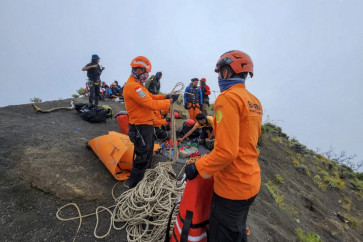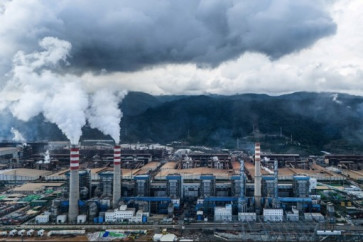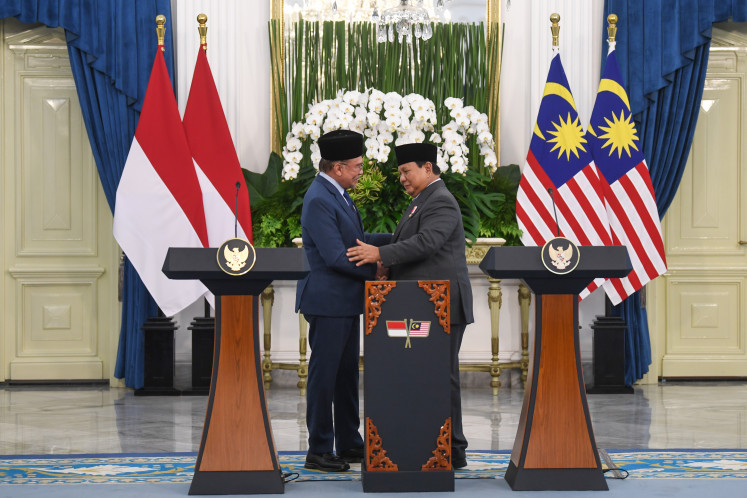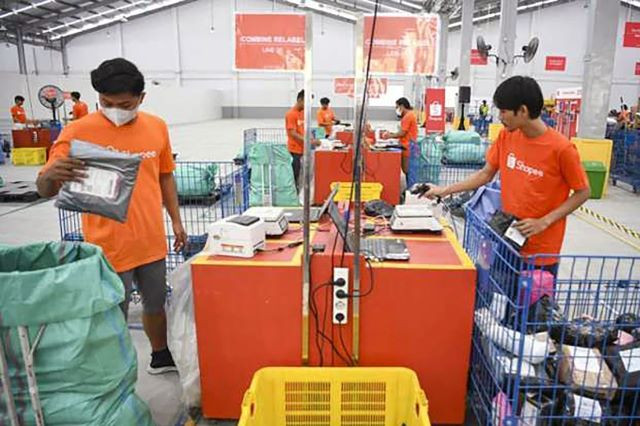Popular Reads
Top Results
Can't find what you're looking for?
View all search resultsPopular Reads
Top Results
Can't find what you're looking for?
View all search resultsMount Ijen’s alert status raised, visitors not put off, mining halted
Smokin’: Sulfur mining activity carries on as usual around Mount Ijen’s crater in October 2011
Change text size
Gift Premium Articles
to Anyone

S
span class="caption" style="width: 398px;">Smokin’: Sulfur mining activity carries on as usual around Mount Ijen’s crater in October 2011. More recently, mining has been banned following an escalation in volcanic activity. Visitors have also been told to stay at least 1.5 kilometers away from the crater. JP/Indra HarsaputraDespite the rise in Mount Ijen’s alert status to level two, it does not seem to have dissuaded tourists from visiting the mountain.
Manager of Jampit Gardens, operated by state-run plantation firm PT Perkebunan Nusantara XII, Ardi Irianto, said the number of guests staying at the Arabica Homestay had not experienced a decline.
The inn management, however, had informed them to stay clear of a 1.5-kilometer radius of Ijen Crater with the volcano’s status having been raised to the second-level alert status.
“The Ijen Crater Lake is very much an attraction to foreign tourists, but they are staying on until Mount Ijen’s status returns to normal,” Ardi told The Jakarta Post by phone on Friday.
Mount Ijen, in East Java, famous for its 22-by-25-km Ijen Crater, which erupted three times 3,500 years ago, is becoming an ever more popular attraction for foreign visitors.
As of September this year, more than 10,000 visitors had visited Ijen Crater. Of that number, 70 percent were tourists from France, while the remainder came from the Netherlands, Belgium, Germany, Great Britain or Asian countries.
The rising number of visitors is matched by the number of tourists staying at the Arabica Homestay. In 2010, 3,390 visited the complex compared to the 3,189 guests who stayed there in 2009.
Previously, on Dec. 14, Bambang Heri Purwanto, head of the Ijen Volcano Observation Post in Taman Sari village, Licin district, Banyuwangi, East Java, said the mountain’s status had increased from normal to alert.
The decision was based on observations of volcanic and visual data and analysis in the field, including lake-water temperature monitoring.
“Tremors have been recorded since October and seismic activities began to rise from 2 mm to 6 mm, with a frequency of three times daily, to more than 10 times over the past week,” he said.
Bambang added that the seismic activities, with an amplitude of between 3 and 6 mm, and volcanic activities had further increased by more than 10 times in the past month.
“With the rise in status, the Volcanic and Geological Disaster Mitigation Center (PVMBG) has recommended a 1.5-kilometer radius should be free from human activities, including sulfur mining,” he said.
Bambang urged residents living around Ijen Crater not to panic, to remain calm and not be provoked by eruption rumors. Residents are asked to remain alert following the rise in status.
“Sulfur mining activities in Ijen Crater have been halted today until further notice,” he said.
Ijen Crater is known as the main sulfur producer in Indonesia, with sulfur reserves reaching 14 tons. The PVMBG says the volume of sulfur being mined in Ijen Crater, involving around 200 miners, is only 20 percent of the potential resources.
The mountain has the highest lake-water acidity level in the world.









